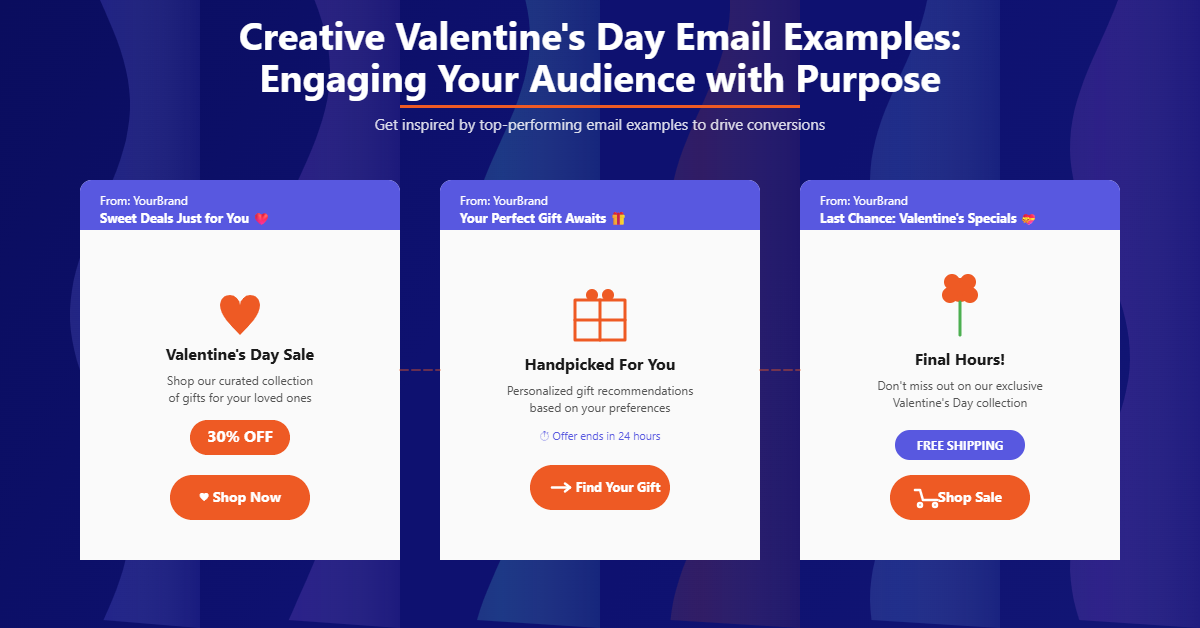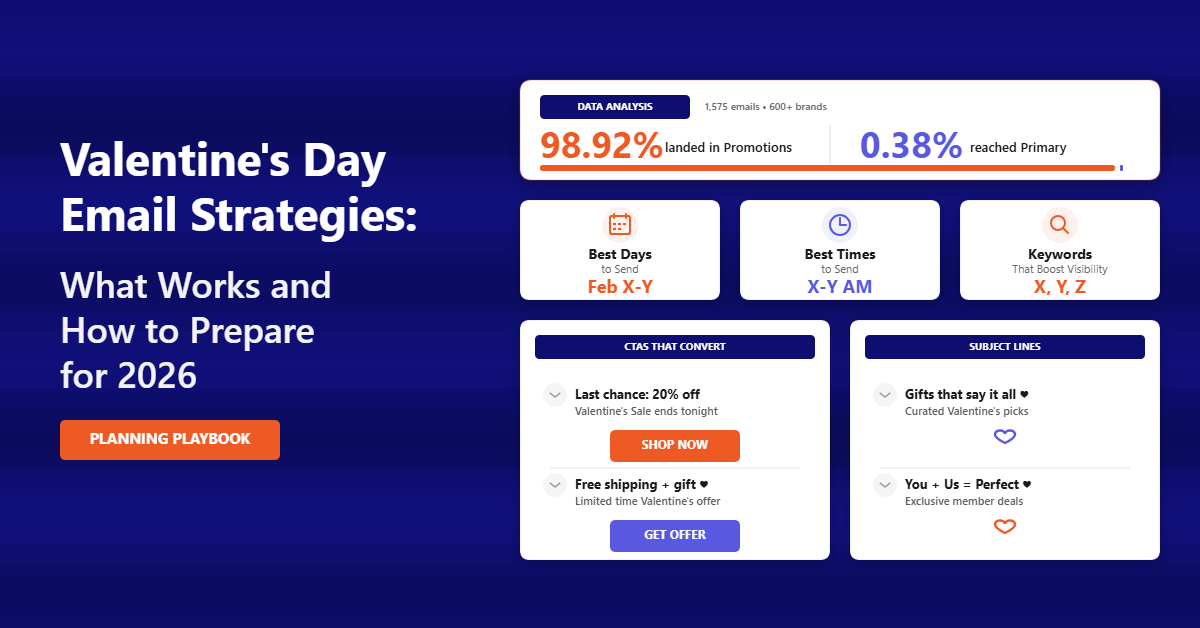Shopping cart abandonment can be eternal pain and a leading cause of losing out revenue. Recently, Ecommerce stores on an average 69.80% of shoppers leave without completing their purchase. Therefore, abandoned shopping cart rates are a marketer’s nightmare. Most marketers and Ecommerce stores are also struggling to build a roadmap that would effectively bring down the curse of the cart abandonment rate.
This formidable problem needs to be nipped in the bud by identifying the reasons for abandoned carts. That’s why we at TargetBay have decided to elaborate on the top 9 reasons that lead your customers to abandon their Ecommerce shopping cart.
Check out to know the Basics of Abandoned cart emails.
Top 9 Reasons for Shopping Cart Abandonment
Even before attempting to solve it, it’s crucial to look for the reasons that are driving the customers away and forcing businesses to send abandoned cart emails.
1. High Additional Costs
Imagine: A customer has added an item to their cart and is meaning to checkout. But, right at the checkout, they come across additional and hidden costs. Trigger alert!
An in-depth study by the Baymard Institute revealed that 49% percent of survey respondents would willingly leave if they come across extra costs at checkout. The hidden costs are the biggest deal-breaker as they force the customers to rethink their purchase decisions.
How to Combat?
- Transparency is the Key
Being transparent with shoppers and laying out all the costs – shipping costs, taxes, extra charges, etc., upfront will reduce the chance of catching them off guard! Besides, it also helps to build credibility and trust among shoppers by being transparent. TYLER’S shopping page automatically adds shipping costs to the final order price at the checkout to avoid any last-minute cart abandonment.


- Discounted Shipping Cost
Another way to prevent losing money to shopping cart abandonment would be to offer discounted or free delivery. The research found out that over 79% of shoppers are more likely to shop more when there’s a possibility of free shipping. Thus, incentivizing and offering free shipping in abandoned cart emails can also work wonders.
Drunk Elephant was able to make their discounted delivery profitable by creating a threshold if shoppers wish to enjoy the benefits of free shipping. Besides, the brand also uses personalized message bars to talk about their offerings, another excellent tactic to pocket conversions.
Recoup your revenue and improve sales with Abandoned cart email
TRY BAYENGAGE FREE2. Forced Account Creation
Forcing hard-earned users to create a mandatory account or even register to add items to their cart is a bad idea. Almost 24 percent of the survey respondents said that they would prefer to leave the website instead of creating another account.
Shoppers are looking for quick experiences where they wouldn’t have to spend too much time and effort in creating an account. This forceful and redundant step breaks the purchase cycle and will only result in a loss of revenues.
How to Combat?
Hands down, guest checkout works the best. It doesn’t drive away shoppers. However, if business priority demands collecting shopper’s contact information for later promotional emails, take that forward after the completion of the purchase cycle!
Crate & Barrel, a furniture cum home decor company, has done it commendably. They provide customers with a seamless shopping experience that offers utmost convenience and get things done quickly.
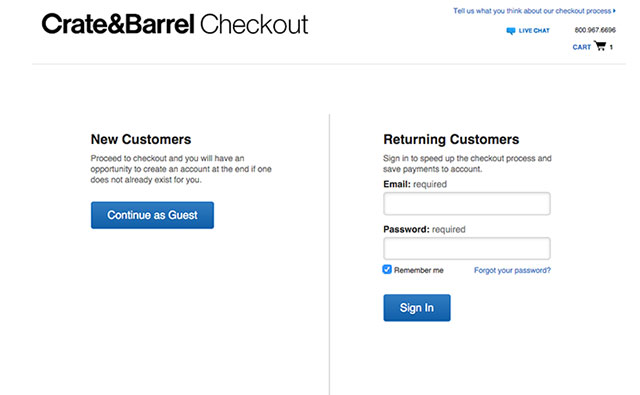
And there are various examples of this kind of account creation during the checkout process. Brand brings shoppers straight to the guest account creation web page even when customers are not logged in. But, even before that, a text widget appears that seeks permission to create a guest account. If shoppers don’t want to go through the ordeal. They can leave.
3. Complex and Time-consuming Checkout
Another big-time mistake is a long, complex checkout process. It is one of the leading reasons customers leave the site and abandon payment. Every single and extra step adds complexity and the form field slows the checkout process for shoppers.
Therefore, slash down the complex checkout system and make it all simple and convenient for your customer to not hurt revenues.
How to combat?
Well, research suggests that reducing checkout steps and minimizing data entry, can optimize the checkout process. Although optimizing is a lot of work and effort, with the right analysis and understanding, one can achieve it in no time. Ultimately, everything boils down to perfecting the existing strategies and changing the ones that don’t work.
Adidas’s checkout concept nails it perfectly. The checkout process is short, simple, and self-explanatory. There is no additional navigation bar to distract the shopper away from some other section.

4. Site not mobile-friendly
As the sheer amount of Smartphone users increases, the abandoned cart rates have also increased. Besides, with the pandemic hitting the retail outlets hard, it was on the business owners to find a workaround and satiate the needs of first-time digital buyers. Therefore, inadequate mobile sites won’t satisfy customers.
How to combat?
In short, a mobile-friendly Ecommerce site is the need of the hour. Besides, prioritizing and building a responsive, intuitive site that offers customers a seamless experience across devices can aid in combating the abandoned cart emails. Other than the above ones, here are a few details, that needs to be at par:
- Prioritizing critical elements in the site, right from the start
- Ecommerce online stores can use “mobile accordions” to organize and pack information
- Perform A/B testing to continuously fine-tune and make a great impact
Amaroso, an Australian online store nailed this fair and square. Not only does the site load quickly, but also has a simple and intuitive design that helps shoppers to navigate through.

5. Lack of Payment Methods
Every customer buying online wants the convenience to pay through their preferred payment method. Although it looks trivial, it can pose a serious threat as with fewer options available to the shoppers, they are more likely to abandon the cart. Moreover, if shoppers take the pain to navigate, add items and then find out the lack of payment options, it would get difficult to get them back. Another common issue that drives customers away is displaying prices in foreign currencies. This can be detrimental for Ecommerce stores that serve internationally.
How to Combat?
It is quite simple – provide consumers with as many payment options as possible. Although adding these payment gateways costs money, this would showcase businesses’ promptness to prioritize consumer’s choices first.
Besides, now Ecommerce businesses are expected to have the major payment methods like MasterCard, PayPal, and Visa and then expanding to specialized payment options as the conversion increases.
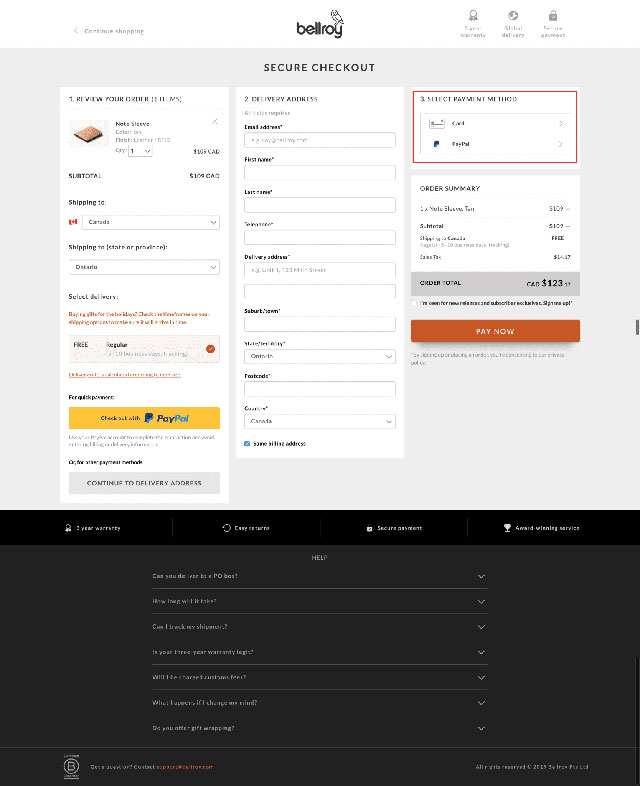
6. Lack of Brand Credibility
This checkout page from the Bellroy brand shows a large number of payment options to a potential customer. Besides, it also lets the customer choose their preferred payment method.
While pricing in foreign currency issues can be resolved with a plugin that enables multi-currency price points based on the geographical location of the shopper.
certificates to support credibility, it can get difficult to score a customer.
How to combat?
Another way to reduce shopping cart abandonment is by increasing the trust of the site and building more credibility. How? One of the easiest methods is by reinstating various social proofs on the site to assure customers.
Besides, regularly optimizing the product pages can also yield great results. Use user-generated content like customer testimonials, product reviews, influencer endorsements to reach and entice more people. All of these factors will help to build a brand personality.
Even the checkout page from ASOS showcases the Norton symbol to gain customers’ trust along with providing credibility to the brand.
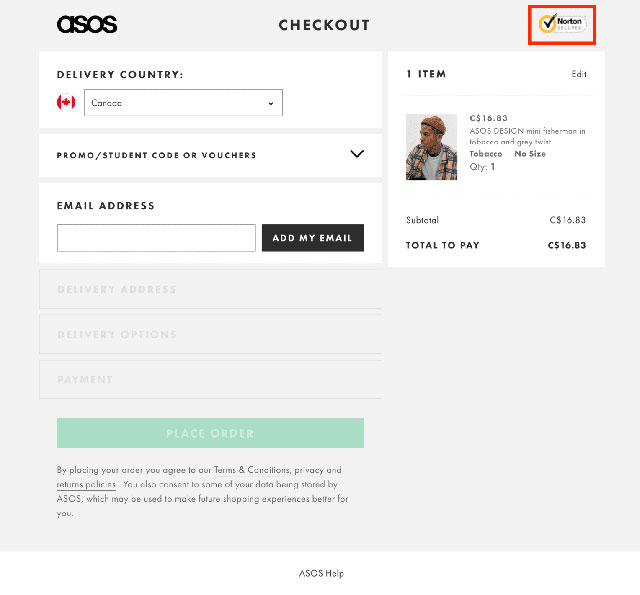
7. Website Performance Issues
Imagine a customer undergoes all through the funnel and while checking out, the website crashes! Along with losing a sale, the crash might put a dent in the brand image. Website crashes, Error 404, landing page errors, etc., can be deemed as serious site performance issues that will force customers to seek a better user experience from a competitor. Even minor performance issues can also scare the customers off.
How to combat?
Test. Analyze. Optimize. Repeat.
Website issues are not new to Ecommerce store owners. Therefore, prioritizing and analyzing the performance, responsiveness, measuring the load times, and downtime of your shopping cart and checkout pages, can make a lot of difference. Identify those errors, and then work towards improving the performance of the shopping cart.
Here are a few of the things one can do to improve:
- Take help from different tools like google analytics, Google Pagespeed Insights, Pingdom to improve site speed.
- Ensure to regularly go through the online store and look for errors that can be a deterrent to shoppers.
8. State Policies Early-on
Another threat to the shopping cart is the inadequate information on the return policy and delivery details. Sometimes, the online stores miss the chance to clearly state policies like return policy, guarantees, etc., which can deter customers away. Besides, an unclear and insufficient return policy will force the shoppers to leave and check out competitor offers.
How to combat?
The willingness to give assurances based on price, quality, or how to support the customer after the sale, helps to retain more shoppers and turn them to brand advocates later. Therefore, offer straightforward policies right from the time they come onto the site so that the customers are aware of what they are getting into from the get-go.
9. No Discount Code Available
An overwhelming number of 46 percent of the shoppers abandon their shopping cart when a discount code doesn’t work. Although most Ecommerce customers are often flooded with discount codes and promotional offers, most of them wait to make a purchase, until they have struck one. So, how to make sure customers don’t abandon their shopping carts?
How to Combat?
Swamp them with discount codes. Is it that simple? Honestly, no. But, making discount codes an obvious component of the checkout program, can do wonders for the online store. Although offering promo codes is a good idea, one should be diligent in ensuring not to give away discounts randomly to all audience segments as it can take a toll on conversions.

This example from Checkout nails the idea.
How Can BayEngage Help You Reduce Shopping Abandonment Rates?
BayEngage by TargetBay is an email marketing tool that can come in handy to send abandoned cart emails to your segmented audience. BayEngage offers a range of pre-built email templates that can be customized to suit your Ecommerce store needs. From illustrated to professionally designed email templates, you templates for all moods and every email marketing campaign. Besides, the compelling copies that come along with these templates can save you a ton of time. Moreover, the drag and drop customization process makes your life all the easier as an Ecommerce store owner. So, what are you waiting for? Just choose TargetBay, get in touch with us, and send the right abandoned cart email templates to achieve a higher conversion rate.
Improve your Abandoned Cart recovery with 30+ Customizable templates
Wrapping Up
Most Ecommerce stores feel doomed by the abandoned cart rate. Shopping cart abandonment is a real concern and can have a huge impact on brand conversions, checkout, and ultimately on your Ecommerce store. Now that you have an idea of the top 9 reasons for customers abandoning the cart along with solutions, we are sure you will be able to identify the problems and find a workaround for it. Thus, just strap in and get started.



